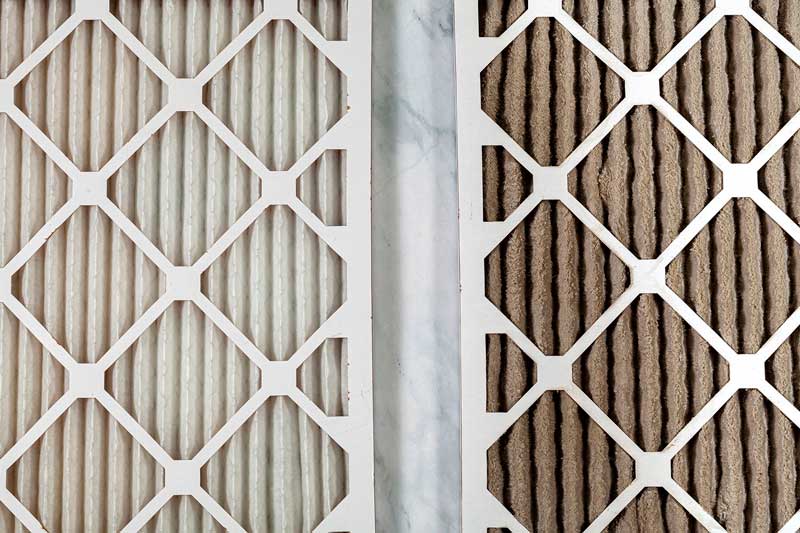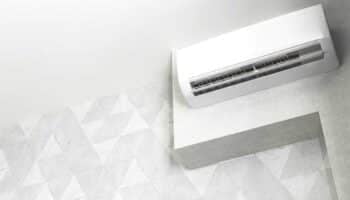We've independently reviewed this article to make sure it's as accurate as we can make it.
To find out more about our article creation and review process, check out our editorial guidelines.
Is your portable air conditioner filling up too quickly? It seems to be one of the things that most irritates people about these appliances.
If constantly draining yours has you on your last nerve; the following should help.
Portable air conditioners can fill up with water too quickly for several reasons, including high humidity, improper drainage, incorrect installation, insufficient ventilation, overcooling, and more. The good news is there’s a simple fix for nearly every reason why your air conditioner produces too much water.
So keep reading, and we’ll get you fixed up as soon as possible.
What You’ll Need
There’s a good chance you won’t need any tools or accessories for the fixes listed below, however, depending on your issue, you may need or want one of the following.
- Condensate pump
- Bottle brush
- Bubble level
- Spray bottle with warm water and mild soap, such as dish soap or hand soap
Why Your Portable AC Fills Up Too Quickly
As mentioned above, there are several reasons why your air conditioner can fill up with water too quickly. The following is a list of each and an explanation of what you need to do to correct the problem.
#1 High Humidity
Do you live in a high-humidity climate zone? Or perhaps there’s some reason why your home is excessively humid, perhaps because of a fish tank, or even everyday things like doing laundry, cooking, showering, or bathing.
The process by which an air conditioner cools your indoor air includes removing moisture from the air. The more moisture in your air, the more water your air conditioner will collect.
All of that humidity adds up and creates more condensation than you probably want to deal with.
So what’s the fix?
Step 1
This probably isn’t what you want to hear, but the easiest fix is to step up your schedule for emptying the water reservoir. While many manufacturers recommend doing so every eight hours, you may need to do it more often.
Step 2
To save yourself from having to drain your air conditioner so often, you do have the option of setting up a continuous drain. Refer to the video above, but know that you will need to have your unit close to a floor drain.
Step 3
If you don’t have a floor drain, you do have the option of using a condensate pump. The pump works against gravity to push water up to a drain in a sink or tub. They can typically be positioned about 20 feet away from the drain—meaning you have a 20-foot hose.
#2 Improper Drainage

If the drainage system of your portable AC is not functioning correctly or is blocked, water can accumulate quickly. This could be caused by a clogged drainpipe, a faulty drain pump, or a disconnected drainage hose.
Some portable air conditioners have more than one drain hole and some don’t have a water tank at all. So some will have a drain line or tube and others nothing more than a spout. Regardless, it’s imperative that water be able to flow freely.
Step 1
Unplug the drain cap or remove the drain line.
Step 2
Use a long tool such as a screwdriver or a narrow bottle brush to clean out the inside of the line. And then keep flushing water through it until it flows freely.
Step 3
Replace the line.
Step 4
If you just have a spout, make sure that it’s not clogged. Again, you can try a bottle brush or just use a paper towel or cloth.
Step 5
If your unit has one or more reservoirs, clean them thoroughly and make sure there’s no buildup of sediment or debris — anything that could move to the spout or line and clog it.
Step 6
If you use a condensate pump, make sure it’s working properly. If it’s not, it will fail to drain your air conditioner.
#3 Incorrect Installation
Your portable air conditioner needs to be sitting on a level surface . If it isn’t, water can’t flow freely towards the drainage system so it will accumulate faster.
Confirm that the floor your air conditioner is sitting on is level. If necessary, use a bubble level.
#4 Insufficient Ventilation
It’s important that your air conditioner has sufficient airflow around it. Many manufacturers recommend at least two to three feet of open space around the unit.
Airflow helps condensation evaporate, so without it, more water will accumulate in your unit.
Check your owner’s manual for specifics on recommended clearance around your air conditioner. Alternatively, just make sure that there are at least 2 or 3 feet between the air conditioner’s vents/sides and any walls or furniture.
#5 Overcooling
What’s the first thing you want to do on a really hot day? You may want to turn the thermostat on your air conditioner even lower to make the air even colder.
This is a bad idea since excessively low temperatures can cause the evaporator coil to become too cold. Then, when warm air from the room mingles with the cold coil, condensation occurs much quicker, leading to faster water accumulation.
#6 Dirty or Blocked Air Filters

If the air filters in your portable AC are dirty or clogged, they can impede the airflow and reduce the unit’s efficiency. As a result, just like in the above scenario, the coil may get colder, leading to faster condensation and water buildup.
This may come as a surprise to you, but a dirty air filter can cause a multitude of problems with an air conditioner. One of them is too much water because condensation is building up.
Some portable air conditioners have more than one filter, and depending on your unit you may have to clean or replace your filter. You’ll need to refer to your user’s manual if you have a filter that needs to be replaced.
Step 1
Open your air conditioner’s grill, according to the manufacturer’s directions.
Step 2
Inspect your filter — or filters — and if they’re dirty, either change or clean them depending on requirements. You can clean the filters using warm water and mild detergent, such as dish soap or hand soap.
Step 3
If your filter is the type that needs to be cleaned, it’s important that you make sure it’s completely dry before reinstalling it. If there’s any moisture remaining on it at all when you reinstall it, you’re almost sure to get mold growth.
#7 Oversized Unit
As with any type of air conditioner, if your portable unit is too big for the space that it’s cooling, it will cool your air down quicker, but it won’t be able to effectively dehumidify your space. This can cause excessive moisture to accumulate, resulting in your water reservoir filling faster.
Step 1
Refer to the table below, which is a buyer’s guide provided by Lowe’s that matches the area covered and required BTUs.
| Coverage Area | BTUs |
|---|---|
| 299 sq ft or less | 8,000 BTUs |
| 300 to 500 sq ft | 10,000 BTUs |
| 501 to 700 sq ft | 12,000 BTUs |
| 1000 and over sq ft | 13,000 BTUs |
If the room you have your air conditioner in is too small for the recommended BTUs, unfortunately, there’s not much you can do other than open doors or widen the area where the air conditioner will cool.
#8 Malfunctioning Components
Finally, it’s possible that something is no longer working properly in your air conditioner. Faulty components within the unit such as the thermostat or sensor can disrupt the cooling and dehumidification process — which may cause water to collect quicker than normal.
Step 1
If you’re able to access the circuit board in the air conditioner, check for any visual damage. If something appears to be fried, check your user’s manual for replacement parts.
Conclusion
As we’ve discussed, there are multiple reasons why your portable air conditioner may fill up with water too quickly. Some of them are environmental issues that you may not be able to do anything about, but others require simple fixes.
To recap, here are the reasons we’ve discussed.
- Too much humidity
- Improper drainage
- Incorrect installation
- Insufficient ventilation
- Over cooling
- Dirty or blocked air filters
- Oversized unit
- Malfunctioning components
Hopefully, one of those addresses your problem and gave you the information necessary to fix it.
While you’re here, why not check out our related posts below? Perhaps we can help you with something else.







